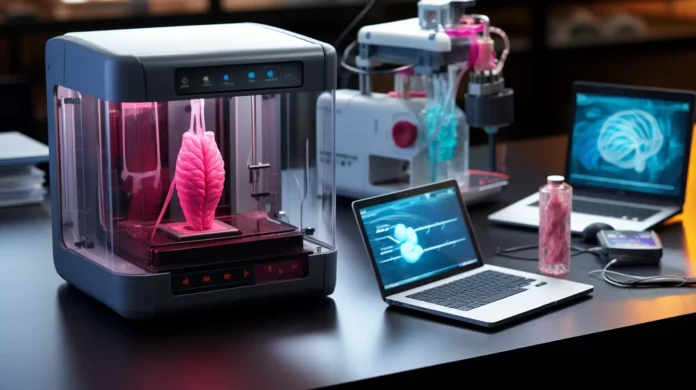One of the most revolutionary developments in healthcare—and biohacking—is the rise of 3D-printed organs and advanced biomaterials. These technologies are at the cutting edge of regenerative medicine and have profound implications for biohackers interested in improving and extending human life through medical innovation.
The creation of bioengineered tissues and organs involves using specialized bioinks, which are derived from natural or synthetic materials like silk and collagen. These bioinks are used to print structures that mimic the human body’s organ architecture, providing unprecedented opportunities for drug testing and even organ transplantation. For example, 3D-printed heart models are already being used to study cardiac disorders, allowing researchers to test new treatments and therapies in ways that were previously impossible. The same concept is being applied to lung models, which are helping scientists develop more effective drugs to combat respiratory diseases.
The technology behind these advancements is evolving rapidly. Volumetric Additive Manufacturing (VAM) is unlocking new frontiers in 3D printing by allowing for the creation of more complex and functional organ models. VAM uses light-based techniques to print entire volumes of tissue at once, rather than layer-by-layer, drastically improving both the speed and quality of the printed structures. This is a significant leap forward for personalized medicine, as doctors can now use 3D-printed organs to tailor treatments specifically for individual patients.
For biohackers, the potential to utilize these technologies for personal health optimization is an exciting frontier. Imagine a future where 3D-printed organ replacements are not just for life-saving surgeries but also for enhancements—allowing for improved physical performance or longevity. The intersection of biohacking with regenerative medicine could redefine the boundaries of what’s possible in health and human performance.
As more biohacking communities begin to explore the potential of organ regeneration and repair, 3D printing technologies offer a fascinating glimpse into what the future of health might look like.
References:
– 3D-Printed Organ Models and Biomaterials


